Dev Yashpal Sheth
Perturbation CheckLists for Evaluating NLG Evaluation Metrics
Sep 13, 2021
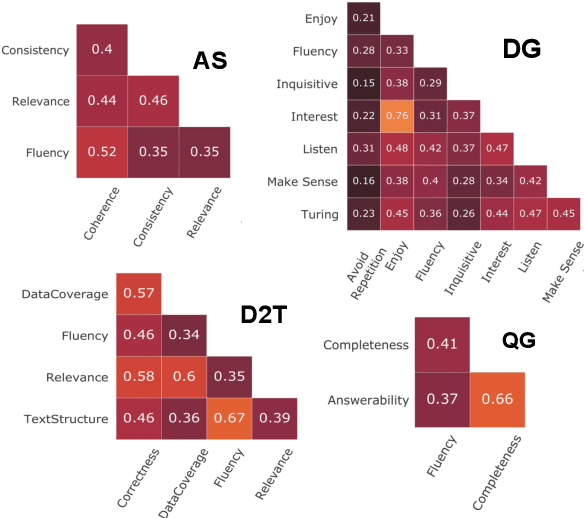
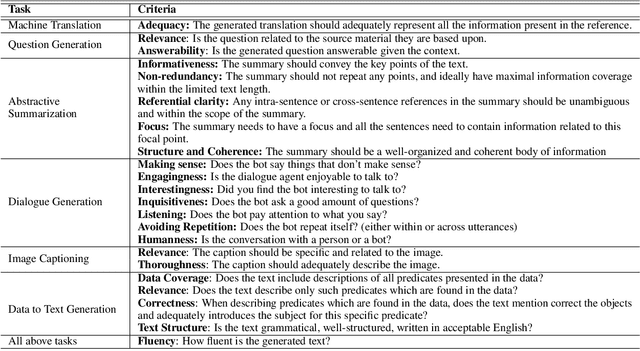
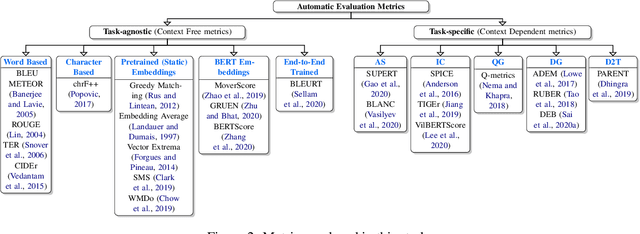
Abstract:Natural Language Generation (NLG) evaluation is a multifaceted task requiring assessment of multiple desirable criteria, e.g., fluency, coherency, coverage, relevance, adequacy, overall quality, etc. Across existing datasets for 6 NLG tasks, we observe that the human evaluation scores on these multiple criteria are often not correlated. For example, there is a very low correlation between human scores on fluency and data coverage for the task of structured data to text generation. This suggests that the current recipe of proposing new automatic evaluation metrics for NLG by showing that they correlate well with scores assigned by humans for a single criteria (overall quality) alone is inadequate. Indeed, our extensive study involving 25 automatic evaluation metrics across 6 different tasks and 18 different evaluation criteria shows that there is no single metric which correlates well with human scores on all desirable criteria, for most NLG tasks. Given this situation, we propose CheckLists for better design and evaluation of automatic metrics. We design templates which target a specific criteria (e.g., coverage) and perturb the output such that the quality gets affected only along this specific criteria (e.g., the coverage drops). We show that existing evaluation metrics are not robust against even such simple perturbations and disagree with scores assigned by humans to the perturbed output. The proposed templates thus allow for a fine-grained assessment of automatic evaluation metrics exposing their limitations and will facilitate better design, analysis and evaluation of such metrics.
Unsupervised Deep Video Denoising
Dec 01, 2020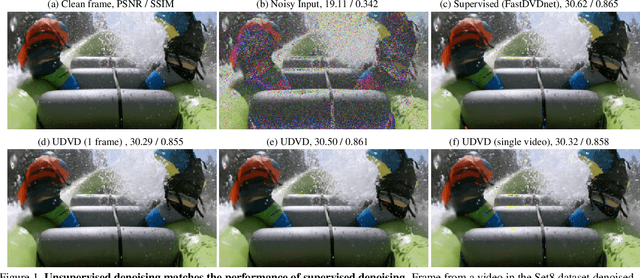

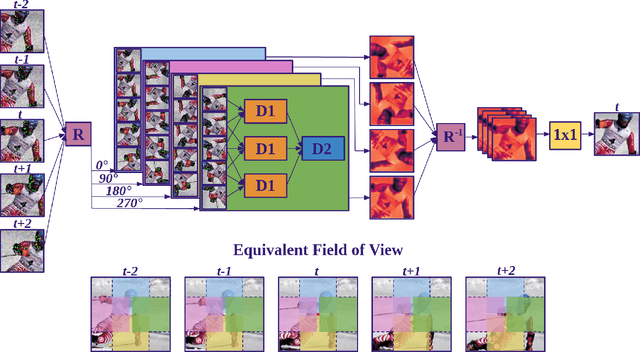

Abstract:Deep convolutional neural networks (CNNs) currently achieve state-of-the-art performance in denoising videos. They are typically trained with supervision, minimizing the error between the network output and ground-truth clean videos. However, in many applications, such as microscopy, noiseless videos are not available. To address these cases, we build on recent advances in unsupervised still image denoising to develop an Unsupervised Deep Video Denoiser (UDVD). UDVD is shown to perform competitively with current state-of-the-art supervised methods on benchmark datasets, even when trained only on a single short noisy video sequence. Experiments on fluorescence-microscopy and electron-microscopy data illustrate the promise of our approach for imaging modalities where ground-truth clean data is generally not available. In addition, we study the mechanisms used by trained CNNs to perform video denoising. An analysis of the gradient of the network output with respect to its input reveals that these networks perform spatio-temporal filtering that is adapted to the particular spatial structures and motion of the underlying content. We interpret this as an implicit and highly effective form of motion compensation, a widely used paradigm in traditional video denoising, compression, and analysis. Code and iPython notebooks for our analysis are available in https://sreyas-mohan.github.io/udvd/ .
Deep Denoising For Scientific Discovery: A Case Study In Electron Microscopy
Oct 24, 2020



Abstract:Denoising is a fundamental challenge in scientific imaging. Deep convolutional neural networks (CNNs) provide the current state of the art in denoising natural images, where they produce impressive results. However, their potential has barely been explored in the context of scientific imaging. Denoising CNNs are typically trained on real natural images artificially corrupted with simulated noise. In contrast, in scientific applications, noiseless ground-truth images are usually not available. To address this issue, we propose a simulation-based denoising (SBD) framework, in which CNNs are trained on simulated images. We test the framework on data obtained from transmission electron microscopy (TEM), an imaging technique with widespread applications in material science, biology, and medicine. SBD outperforms existing techniques by a wide margin on a simulated benchmark dataset, as well as on real data. Apart from the denoised images, SBD generates likelihood maps to visualize the agreement between the structure of the denoised image and the observed data. Our results reveal shortcomings of state-of-the-art denoising architectures, such as their small field-of-view: substantially increasing the field-of-view of the CNNs allows them to exploit non-local periodic patterns in the data, which is crucial at high noise levels. In addition, we analyze the generalization capability of SBD, demonstrating that the trained networks are robust to variations of imaging parameters and of the underlying signal structure. Finally, we release the first publicly available benchmark dataset of TEM images, containing 18,000 examples.
 Add to Chrome
Add to Chrome Add to Firefox
Add to Firefox Add to Edge
Add to Edge